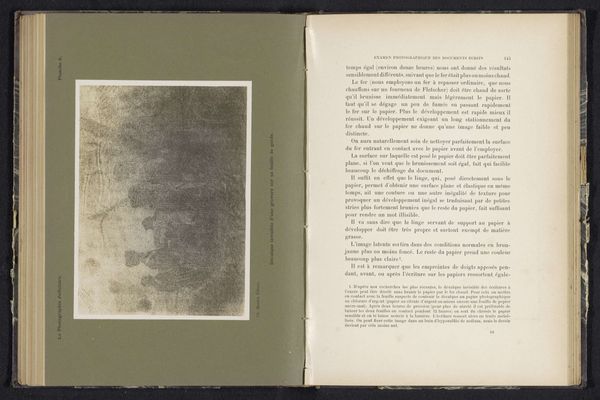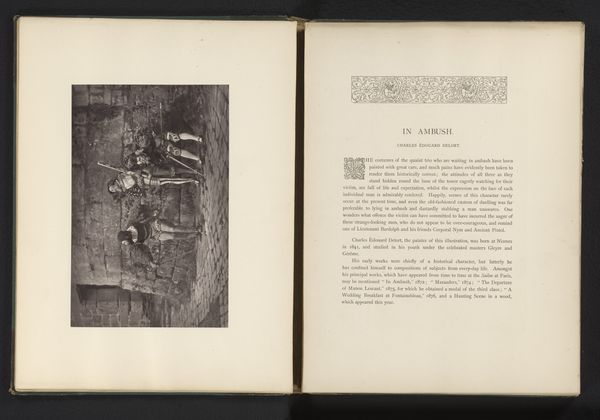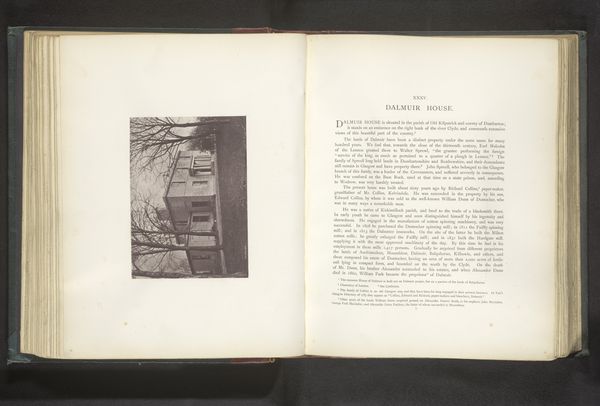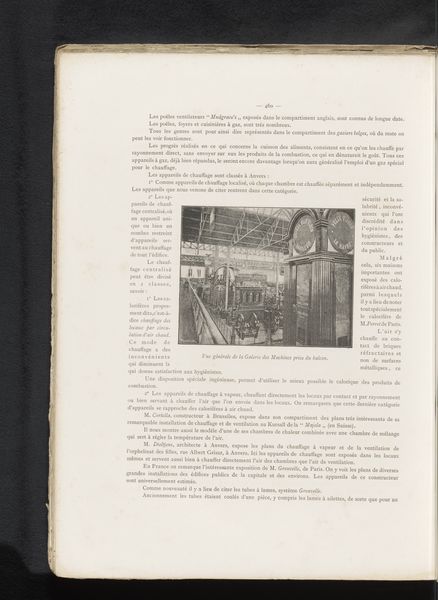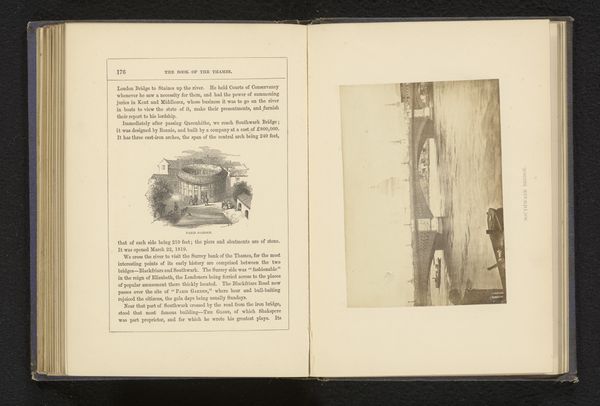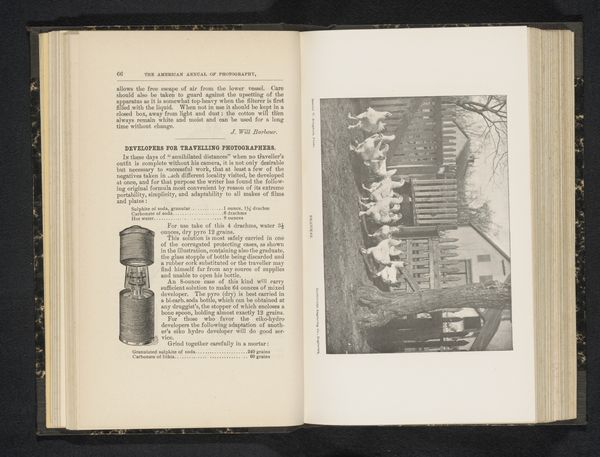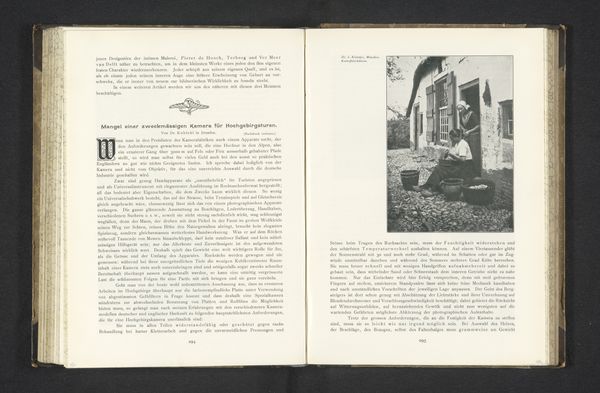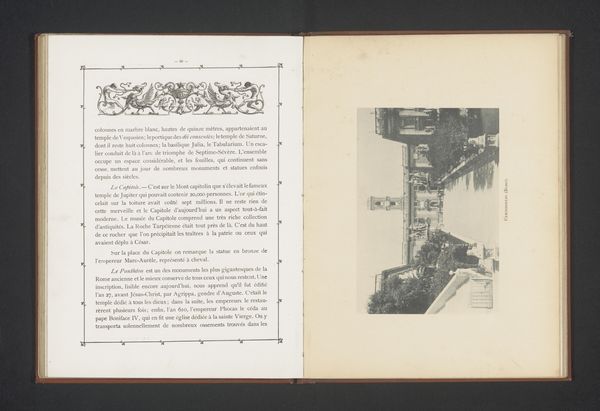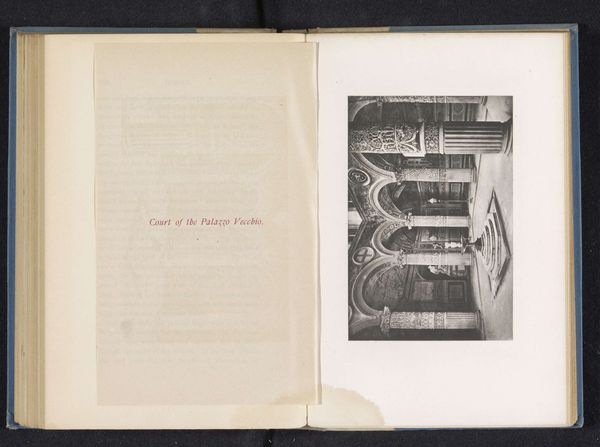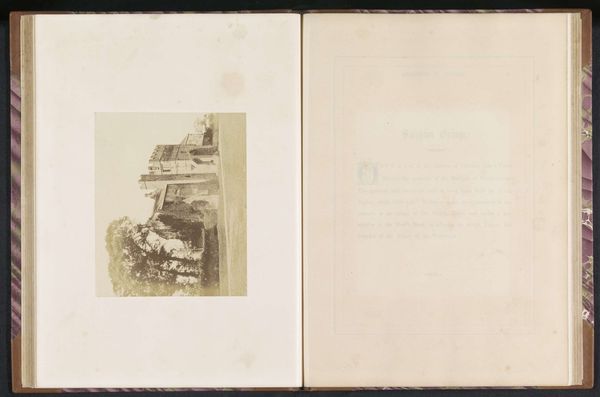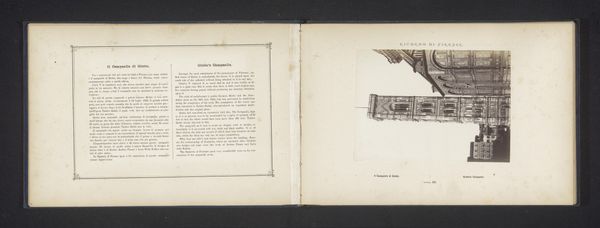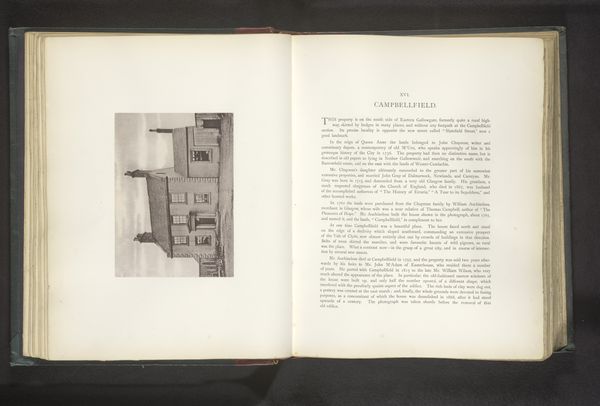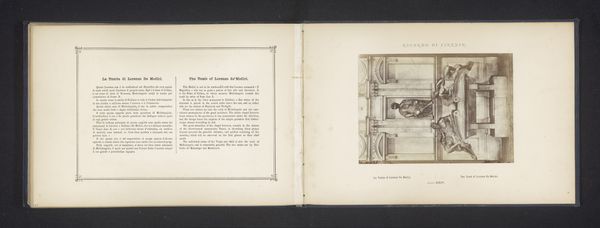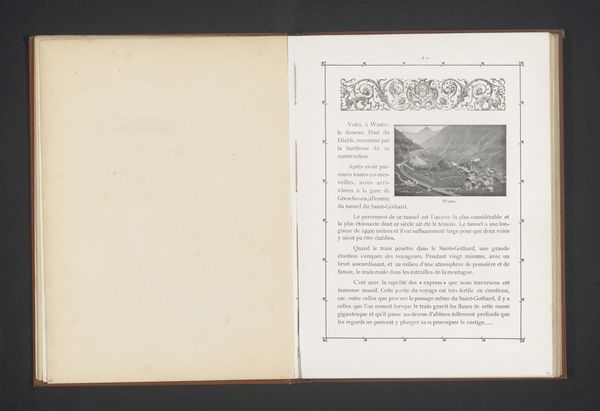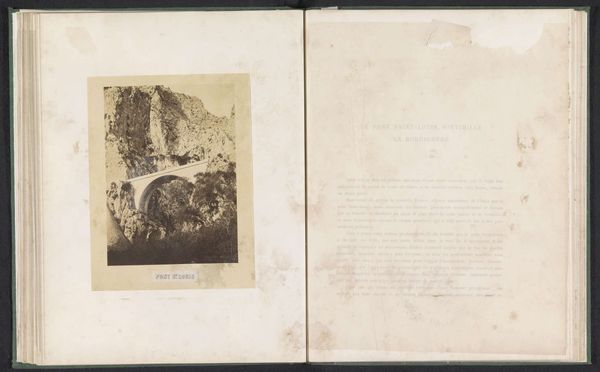
Spookhistoriën, medegedeeld door Meester Penneschacht aan zijne kostleerlingen 1850
0:00
0:00
print, engraving
#
narrative-art
# print
#
romanticism
#
history-painting
#
engraving
Dimensions: height 410 mm, width 326 mm
Copyright: Rijks Museum: Open Domain
Curator: Here we have "Spookhistoriën, medegedeeld door Meester Penneschacht aan zijne Kostleerlingen," or "Ghost Stories, told by Master Penneschacht to his Pupils," an engraving from 1850 by Jan Schuitemaker. What strikes you immediately about this piece? Editor: There's a sort of eerie quiet to it, despite the "ghost story" subject. It's unsettlingly formal, like looking at old theatre set designs more than trying to actually frighten someone. All of the visual fields appear so isolated, distant, and disconnected from any real visceral feeling. Curator: That disconnect could very well be the point. Schuitemaker’s print comes from a larger context of printed matter intended for children. It showcases narrative-art, presenting cautionary tales through sequential imagery intended to educate as much as entertain. Considering social anxieties of the mid-19th century, such visual depictions, while appearing tame to our eyes, fulfilled the demand for providing children a controlled encounter with darkness in safe space. Editor: Interesting. Seeing it in that light makes me reconsider my initial reading of isolation. Each of the four scenes becomes almost a contained lesson, illustrating morality by representing the un-real and encouraging an individual's reading rather than community values. I wonder to what degree the rise of individualization during this time intersects with what are essentially Dutch folk stories and whether the artist engages this social shift through narrative and engraving print making. Curator: It’s important not to overlook the title, "Spookhistoriën," as well, implying not just ghost stories, but 'histories', anchoring the spectral within the real and experienced past. It blurs the lines between accepted narratives of nationhood or societal progression and these more gothic elements, highlighting repressed memories, social unrests and a population seeking an outlet for those anxieties. Editor: So the visual constraints also operate at a conceptual level... interesting! Ultimately it leaves you with an eerie aftertaste— the very thing childhood anxieties are meant to do, making room for both imagination and the potential to instill appropriate lessons in line with an up and coming world. Curator: Absolutely, seeing the world reflected while facing your fears seems a productive path for growth that the artist successfully tackles with his rendering. Editor: Thank you.
Comments
No comments
Be the first to comment and join the conversation on the ultimate creative platform.
